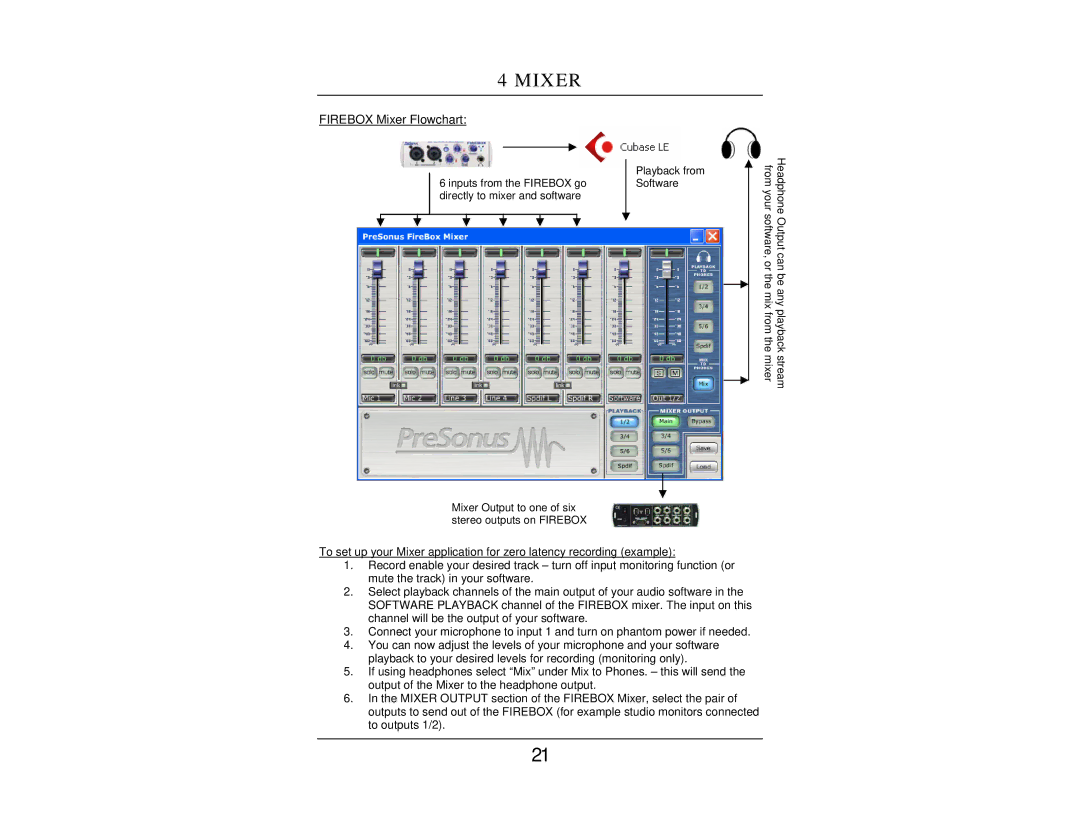FIREBOX specifications
The PreSonus AudioFireBox represents a significant advancement in mobile audio interface technology, ideal for both musicians and audio professionals on the go. Designed to provide high-quality audio recording and playback, the AudioFireBox is compact, making it incredibly portable without sacrificing functionality.One of the standout features of the AudioFireBox is its FireWire connectivity. FireWire offers increased bandwidth compared to traditional USB interfaces, allowing for higher sample rates and bit depths. This means users can record up to 24-bit/96 kHz audio, capturing intricate details and nuances in sound that are critical for professional recording.
In terms of inputs and outputs, the AudioFireBox boasts four combination mic/instrument (XLR/TRS) inputs. This versatility makes it suitable for various recording situations, whether you're tracking vocals, instruments, or capturing stereo mixes. Additionally, the interface features six line outputs, allowing users to route audio to external devices, such as monitors or effects processors, providing flexibility in studio setups.
The AudioFireBox includes a robust monitoring system. It features zero-latency monitoring, allowing musicians to hear their inputs without delay. This is crucial during tracking sessions as it helps performers maintain timing and stay immersed in their performance. The built-in headphone output also allows for personal monitoring during sessions.
From a build quality perspective, the PreSonus AudioFireBox is designed to withstand the rigors of travel, featuring a durable chassis. Its intuitive front-panel controls provide easy access to gain settings and monitoring functions, making adjustments simple, even in the heat of recording.
The AudioFireBox is also compatible with most major digital audio workstations (DAWs), including Pro Tools, Logic Pro, and Ableton Live. Its extensive compatibility expands its usability, making it an excellent choice for those already invested in specific software ecosystems.
Moreover, the PreSonus AudioFireBox comes bundled with Studio One Artist software, providing users with everything they need to start producing music right out of the box. This full-featured DAW offers a streamlined workflow, making it easy for beginners to dive into music production.
In summary, the PreSonus AudioFireBox is a powerful audio interface that combines portability, versatility, and high-quality sound. Its FireWire connectivity, multiple inputs and outputs, zero-latency monitoring, and robust software package make it an excellent choice for both aspiring artists and seasoned professionals looking to enhance their recording capabilities while maintaining mobility.

